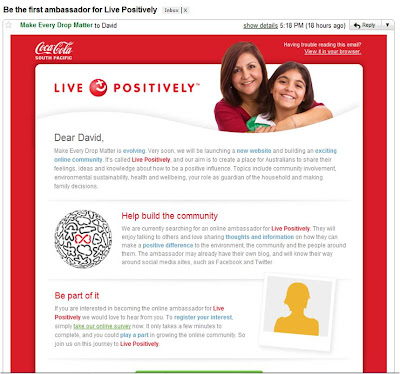Governments are often criticised for not putting in the hard yards when it comes to forward planning. They start building desalination plants after we run out of water. They start adding lanes to freeways after traffic is at a standstill. They build more power stations after the black-outs start.
But there’s no way you could accuse Paul Lucas (Queensland’s Health Minister) of such poor planning. He’s already building the infrastructure necessary to treat the victims of childhood obesity in 2014.
Back in 2007, the Queensland government implemented a series of initiatives aimed at reducing childhood obesity by 33 % by 2020. Smart Choices would force children to eat healthy food at school and Smart Moves would force children to exercise for at least half an hour during school time.
The policies are very similar to programs for healthy eating and exercise implemented as part of the UK’s Healthy Schools initiative. Those programs were kicked off in 1999 because surveys in 1995 had shown that a quarter of British kids were overweight or obese. In Queensland we took until 2006 to reach that particular milestone, hence the delay (I guess).
The British programs have met with resounding failure. Now almost a third of English kids are overweight or obese. And the prediction is that the numbers will be truly diabolical by 2050.
The presumption underlying the Smart Moves program is that sport prevents obesity in children. But an extended study of the UK program to be released this week suggests that is likely to be nonsense.
After a decade long study of children in the UK, the researchers have concluded that increased physical activity is unlikely to reduce a child’s weight. For years nutritionists have told us that kids are fat because they don’t exercise. But the study concludes that the opposite is in fact the case.
Overweight children eat more and exercise less because they are fat, not the other way round. When you think about it that has a certain logic to it. We are perfectly happy to accept that when children grow taller they demand more food, so why wouldn’t we accept that when they grow fatter they do the same.
We are also happy to accept that a pregnant woman puts on weight (and eats more) because she’s preggers. And just like a pregnant woman, an overweight child, exercises less because it is much harder to move when you are carrying extra weight. Less exercise is a side effect of weight gain not the cause of it.
Growing taller happens because of the work of growth hormones in the child’s body. Pregnancy happens … well, you know why … and also involves hormones. Growing fatter also happens because of the work of hormones.
Appetite control hormones precisely regulate the amount of additional weight gained, but sugar (or more precisely, the fructose half sugar) has been shown to disrupt the operations of those hormones. But fructose limitation is not on the menu for the Queensland government any more than it is in Ole Blighty.
Just like its British equivalent, Queensland’s healthy eating in schools program focuses on the anti-fat dogma trotted out by nutritionists for the last five decades. It has little concern for sugar unless it has been added. Soft drinks are coded ‘red’ because of the added sugar and can only be consumed twice per term (maximum). But juices with identical (or higher) sugar content are coded ‘amber’ and can be consumed every day.
I asked Paul Lucas about that contradiction in July last year. In my request I supplied him with references to many of the recent studies on the damage done by the fructose half of sugar. Paul finally got around to having a minion reply to me in the New Year.
The minion agreed that diets high in added (his emphasis) fructose were indeed undesirable because fructose promotes weight increase, chronic disease and increased circulating fatty acids. But he points out that fruit juice is high in naturally occurring (my emphasis) fructose not added fructose. As such there is no need to change the policy.
Ah, I see. So somehow the very act of adding fructose to water rather than removing the fruit from the fructose and water (juice) must magically transmogrify the fructose from a healthy substance to a dangerous substance. I’m glad that’s been cleared up.
As much as Paul is having his minion trot out the party line, it would seem that he has one eye on the ‘success’ of the British programs. On Sunday he announced that in 2014 Queensland will have its very own childhood obesity treatment clinic. When Smart Moves and Smart Choices produce the inevitable increase in childhood obesity, Paul will be there ready with the ambulance parked at the bottom of the chronic disease cliff face.
How many children need to be sacrificed to nutritional dogma before the science on fructose crosses into the political domain. Do all our kids need to be overweight or suffering from diabetes before we acknowledge that the ‘fat makes you fat and exercise makes you thin’ advice is just plain wrong? Or can we start doing something about it now? Maybe, just maybe, if we did, by the time that brand new clinic is open for business, they won’t be needed.
Also published in Crikey




















Recent Comments